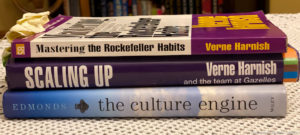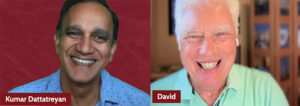We need the courage to start and continue what we should do, and courage to stop what we shouldn’t do.
–Richard L. Evans
What will you say no to today?
Use this powerful question, personally and professionally, to increase your performance. High performing people, especially entrepreneurs, are always attracted to the next “thing”. The next task, next project, next goal, next shiny red ball. It is easy to say yes. It can be hard to say no.
We also continue tasks, processes, and projects that almost everyone knows should be stopped. Any business that has been around for more than a few years, has processes that made sense when the business started, yet make no sense today. For every new process you introduce, do you stop one of your existing ones? Stopping is another powerful way to say no.
Everyone has twenty-four hours in a day. This is a cliché for a reason–it is true. We each have to make a conscious choice in how we use our twenty-four hours today. By setting things up to make it easy for you to say no, you can then focus on the important strategic tasks that you should say yes to.
Here are some ideas on how to get started with NO:
Personal: Create a “Will Not Do List.” Then stick with it. Do you want to leave the office at 5:00 so that you can go exercise? Do you let requests in the last half hour of the day side-track you? Block book the last half hour of your day for clean up and say no to anything new that comes up in that half hour. Make sure to leave the office on time so that people see that your behaviour matches your words.
Process: I recently talked with a leader who was coaching his CFO to say no to requests that outside of their documented processes. Spend as much time figuring out what is not included in a process as what is, so that everyone is clear that when you say no you mean no when someone wants to make an exception.
Projects: When creating a project charter, be clear what is in scope and what is out-of-scope for the project. Projects grow exponentially in tasks and time, when you keep saying yes to new requests that expand the scope of the project. If saying no is too difficult, say “No, we will not add your request at this time, but we will consider it after we have completed this edition of the project.”
Leadership: As a leader, there are two critical things you must do in order to let people say no and operate at their best:
- You must be clear on your own “No List” and you must stick to it. If you constantly make exceptions, people will know you don’t really mean no, when you say no.
- You must let the people you lead say no to you. If you do not respect their boundaries, they will have no choice but to say “yes” with the typical consequences of staying late, becoming overworked, and making mistakes.
Many of us have been in organizations where no one is willing to pitch in for the good of everyone. When you make it easy for people to say no, they are more likely to say yes when there is something critical that needs to get done that has a big impact on the whole organization. Everyone needs to be on the same page so that all the people involved understand what to say no to and what to say yes for.
Define your boundaries and start saying no.




